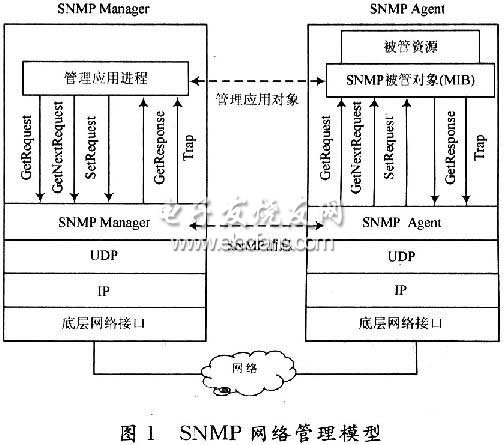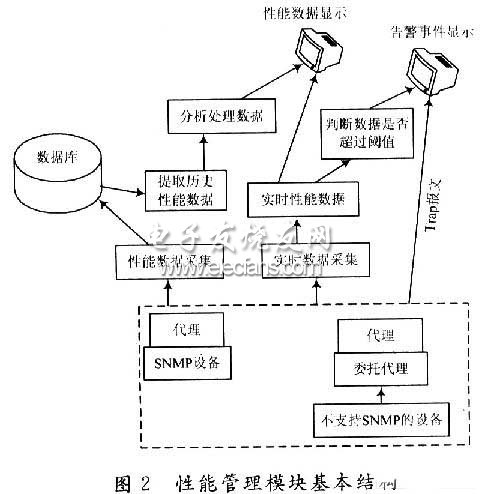introduction
At present, the structure of communication networks is becoming more and more complicated, and the equipment used in communication networks is also becoming more and more complicated. With the enlargement and complexity of networks, how to effectively carry out network management has become an issue that people are generally concerned about. The network management defined by ISO includes five functional domains: configuration management, fault management, performance management, security management, and billing management. The goal of performance management is to optimize network performance and improve operation quality. Performance management is the process of testing the performance of each unit that constitutes the network. It includes testing network connections and the current network segment utilization, identifying possible congestion domains, eliminating high error rates, and detecting network transmission status, etc., to help users solve current network problems.
At present, typical network management standards mainly have two major systems: OSI's CMIS (Common Management InformaTIon Service) / CMIP (Common Management In-formaTIon Protocol) and IETF SNMP (Simple Network Management Protocol) , Simple Network Management Protocol). SNMP is supported by manufacturers due to its easy implementation and extensive TCP / IP application foundation. Moreover, since the SNMP constantly improve security issues in SNMP has also been resolved to some extent, the SNMP faster development.
1 SNMP network management model
The SNMP network management model includes four key components: management station, management agent, management information base, and network management protocol, as shown in Figure 1.

(1) The management station (Manager) is an independent device or a member of a shared network, which provides an interface for managers and network management systems.
(2) Management agent (Agent), the network products of general manufacturers such as routers, switches, etc. have been configured with the relevant SNMP management agent at the factory. For devices that do not support the SNMP protocol, a proxy agent can be developed to support SNMP protocol. The function of the management agent is to respond to the read request (Get) and the set request (Set) sent from the network management station, and to send event and alarm information (Trap) to the network management station.
(3) The management information base (MIB) stores all the information of the managed object resources on the device. Each managed object has an object identifier (OID) for a unique object.
(4) The SNMP network management protocol mainly has the following three functions: Get (Get) enables the network management station to obtain the value of related objects from the agent; Set (Set) enables the network management station to set the value of the related object on the agent; The alarm information (Trap) enables the agent to notify the management station, the agent (Agent) of the management information base MIB value of major changes and other important events.
2 Design of performance management module
2.1 Basic structure of performance management module
According to the above discussion of the SNMP network management model, the basic structure of a performance management module is designed, as shown in Figure 2. The performance management module mainly includes three parts: performance data collection, performance analysis and data management storage. Among them, data management storage is mainly for the specific technology of database management, here mainly discusses performance data collection and performance analysis technology and its implementation issues.

2.2 Performance data collection
There are three main ways to collect performance data: cyclic timing mode, real-time mode and event-driven mode.
The cycle timing mode is pre-configured with a predetermined time interval, which is collected by the server. The collected data is stored in the database, and can also be sent to the console at the same time as needed. The performance parameters used for statistical analysis mainly use this mode for data collection.
The real-time mode is operated by the user on the console and used to collect the current performance data of the managed device. The collected data is immediately sent back to the user interface. After the console program determines whether it exceeds the threshold, the data is presented to the data in some form in real time. For users, this type of data is mainly used to monitor the current performance, and is generally not stored in the database and not queried as historical data. Event-driven mode pre-defines key events, and Agent sends Trap messages to managers when these events occur. Event-driven is very useful for monitoring objects whose status changes infrequently, and can promptly send an alarm message to the administrator when an abnormal situation occurs in the network device.
2.3 Performance analysis
Performance analysis is generally divided into historical performance analysis and real-time performance analysis. Historical performance analysis includes querying and retrieving historical information (such as performance logs and performance reports, etc.), extracting historical performance data from the database, analyzing and calculating performance indicators, and then performing statistics and sorting to visually display and table data To reflect the results of performance analysis and generate performance logs, the administrator can set a time range, select certain attribute information of the device within the time period for statistics, and can also use various graphical display methods to visually view the performance status.
Real-time performance analysis provides real-time data collection, analysis and visualization tools (such as MIB browser), which can monitor real-time performance indicators of network devices and lines such as traffic, load, packet loss, device temperature, memory utilization, and network delay. And can set the time interval of data collection.
5*20MM 6*30MM fuse holder fuse holder fuse holder
Suitable for 5.0 * 20MM fuse
Applicable current: 10A / 250V t-25 to t-70Material: insulator E130i UL 94-V0
Environmental protection products, certified by CE UL VDE CQC
Fuse (fuse), self recovery fuse (PPTC), ESD suppressor, etc.
It is widely used in a variety of electronic and electrical equipment, such as: computer and its peripheral equipment, LCD, battery pack, communication system, audio equipment, automotive industry, testing instruments, industrial control power supply and frequency converter, etc.
Fuse Holder
ShenZhen Antenk Electronics Co,Ltd , https://www.antenk.com